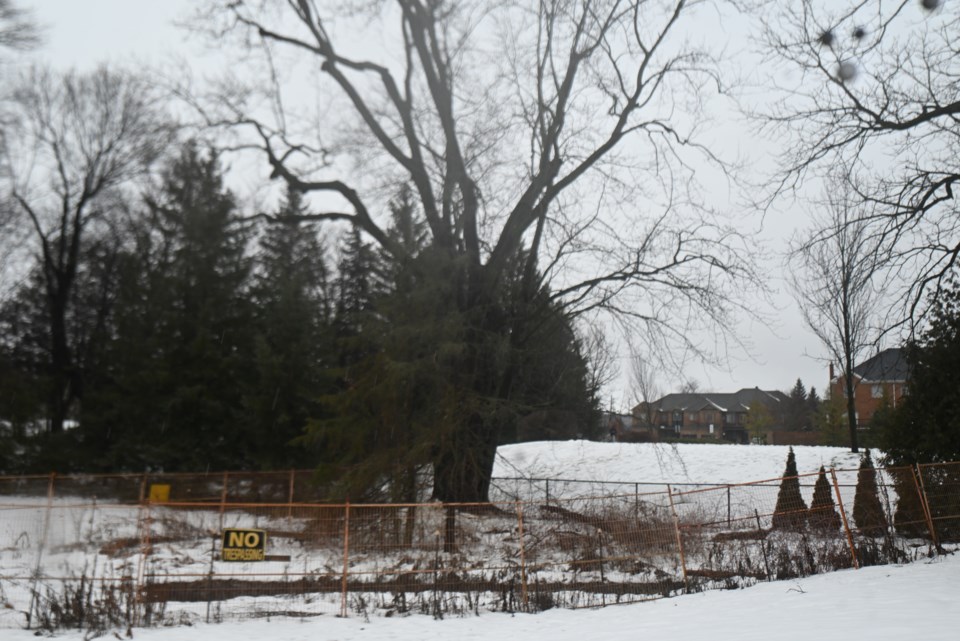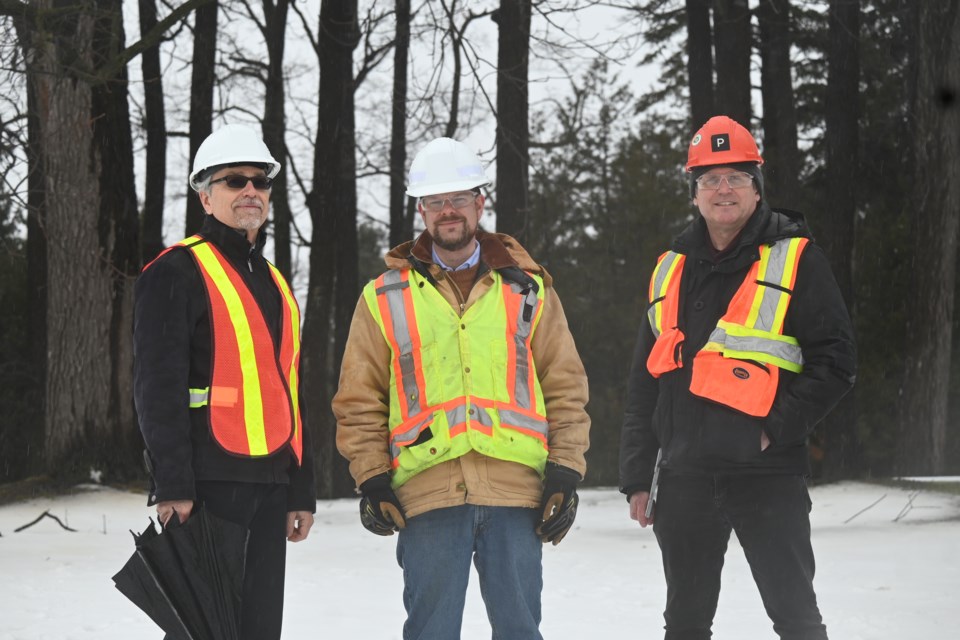Almost every part of the former Mulock estate property in Newmarket is filled with history, from the centrally located house to the hundreds of trees and plants across the site.
Some of trees are more than 100 years old, from maples and willows to a famed grove of walnut trees planted by Sir William Mulock himself.
As the Town of Newmarket navigates the transformation of the property into a public park, it has begun working through the care and maintenance of the trees, determining how to best preserve some, while cutting down others where needed.
“We’re transforming it from what was a private home to a public park, and in doing so, we want to preserve as much of the natural beauty as we can,” development and infrastructure commissioner Peter Noehammer said. “We are removing these trees that are in decline, or in poor health, or pose a hazard… We want to do so in a way that respects nature and also adds, at the end of the day, to the natural heritage value.”
Construction is underway at the Mulock property, starting with selective tree removal. The town announced the start of construction this month, with plans to cut down approximately 150 of the 610 trees on the property. In turn, the town will plant three times as many trees as it removes, bringing the total number of trees to about 950 when completed.
The town is guiding removal through a tree stewardship program. Project management leader Bill White said that workers catalogued every tree over eight inches (20 centimres) to determine their condition. He added that the town wants to protect the roots of the trees, using fencing and lower-impact techniques like tractor vehicles where it can.
One section of trees that will remain untouched is the black walnut tree grove. Sir Mulock, an honorary president of the Canadian branch of the Men of Trees (International Tree Foundation), planted the trees on the border of the winding driveway. None of those trees, dating back a century, will be removed.

“William Mulock was interested in trees and had trees as an agricultural staple, especially black walnuts,” senior landscape architect with PLANT Architect Inc. Eric Klaver said. “One of the key things we did is identifying this as a historical aspect of the site.”
From the walnut grove, across the rolling front lawn, the edge of the property on Yonge Street is visible. Some of those trees visible from the street will be removed, in part to make way for a new entrance to the property at Yonge and Mulock Drive.
“We’re preserving a number of them… there are a number of them that have to come down. There are hazards,” Klaver said, adding that tree removal will also occur to make way for other park features. “There’s also new infrastructure that’s going into the park for electrical service and that kind of thing, all the things you need for a public park that perhaps a private residence didn’t need so much.”
Many of the trees on the property are older, nearing the end of their lifespan. Workers have taken time to evaluate which of those trees should get removed versus which might be nursed through their old age and eventually replaced.

“It depends where they are, and it also depends how well they’ll stand up,” Klaver said. "If it’s a manageable process, we can keep it and work with it.”
Some maple and willow trees will get that kind of preservation help. A large silver maple tree by the pool house will be preserved and nurtured at the end of its lifespan. Nearby, a large sugar maple tree will also be preserved, with lights added to make it a central gathering spot within the new park.

“There are a number of different maples on the site, some of them more desirable than others,” White said. “Managing silver maples is a little more delicate.”
The property also contains red maples and Norway maples.
Those Norway maples are not desirable as an introduced species to North America, White said, preventing growth around them. So, the town will try to remove as many of those as they can.
Near the gathering tree and pool house, the town will build the historic garden feature. There, the town will include a variety of plants, including transplanting the white peonies around the property. The Mulock family would often hold a festive day for the peak of the perennial flowers blooming.
“There would be a peony party every year,” Klaver said. “We are going to pot them and preserve them and replant them.”

The trees that are cut down could still see some use. The town plans to have some of the trees used as furniture on the site, such as benches, or else use them for landscaping, ground cover, or returning to naturalized forest floor.
Tree management will carry on beyond the construction of the park. Klaver said succession is planned for, with trees bound to get older and die and requiring placement.
White said the town knows at what stage all the trees are in their life, and their care will be handled by the forestry team once the park is complete.
“The town is very, very privileged to have been able to secure this property and to maintain it as green space,” White said “Every stage we’ve planned for how we can make the most of it and not only preserve it as well as it is, but in fact, improve the health, improve the ecology.”
Construction on the park overall is expected to go through 2026, but most tree removal will happen in the next few months.
“Keeping it natural is definitely a theme that has emerged right from the beginning and continues on right through construction,” Noehammer said. “Trying to keep it safe for everyone, keep it beautiful and we’re on our way now to creating that space.”
Editor's Note, Feb. 1, 2024: This article was altered to clarify the size of the trees catalogued.



